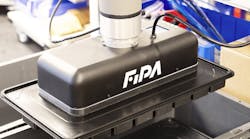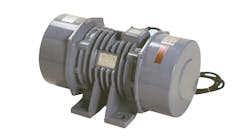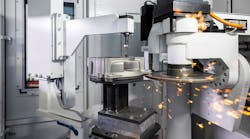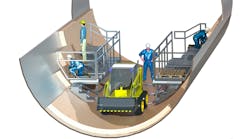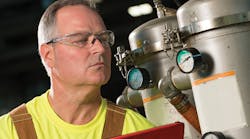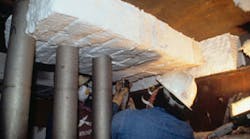MORGAN THERMAL CERAMICS' high-temperature insulation wool Superwool® Plus reportedly is 17% more energy efficient than traditional Refractory Ceramic Fiber (RCF) or other Alkaline Earth Silicate (AES) insulations. The product is recommended for lining furnaces used to process iron and steel or aluminum or any high-temperature application. Its high-temperature capability allows users to increase manufacturing process efficiencies and make significant energy-cost savings.
It’s an effective insulating material in high-temperature environments with a classification temperature of 2,192°F (1,200°C), its developer reports. A breakthrough in MTC’s advanced manufacturing control allows maximized fiber content. As a result, it has up to 20% lower thermal conductivity than competing insulations, and better energy-saving properties, with improved ‘handleability.’
Superwool Plus also offers less mass and blanket thickness than alternative products. Users can use less insulation to achieve weight and cost savings. A thinner insulation blanket, such as the Superwool Plus 6 pcf (pound-force per cubic foot), provides the same insulation as a typical 8 pcf blanket. And, the blanket has high tensile strength with good handling ability.
The material is available in blanket, modules, Pyro-Bloc® modules, paper and bulk (chopped and unchopped). Felt, vacuum-formed products, and board varieties are in development.
Superwool Plus is a low-biopersistent fiber insulation. There is no specific regulatory standard for RCF (except in California): OSHA’s “Particulate Not Otherwise Regulated (PNOR)” standard applies generally. This standard permits total dust of 15 milligrams per cubic meter (mg/m3) with a respirable fraction of 5 mg/m3. The recently enacted permissible exposure limit (PEL) for RCF in California is 0.2 fibers per cubic centimeter, using the 8-hour Time Weighted Average (TWA). The material is exonerated from the carcinogen classification in the European Union under the terms of Nota Q of Directive 67/548/EEC.
“Industries are under increased pressure to improve energy efficiency and reduce carbon emissions,” stated Ron Wainwright, technical director, Morgan Thermal Ceramics. “In addition, regulatory agencies in the United States are beginning to review RCF for classification as a substance of very high concern. In light of this, Morgan Thermal Ceramics is committed to providing a new range of products to replace RCF, which offer more value and satisfy the needs of the future. The Superwool Plus range is an ideal alternative to RCF, helping customers to increase energy efficiencies throughout their plants.”

